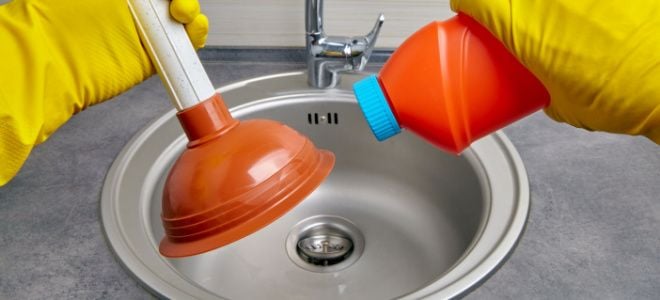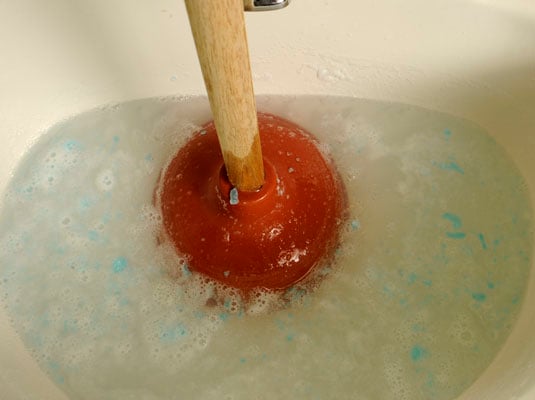Effective Plunger and Drain Cleaners Application: Key Advice
Effective Plunger and Drain Cleaners Application: Key Advice
Blog Article
Everyone will have their own unique thinking involving Here's How to Correctly Use a Toilet Plunger.

Introduction
Proper upkeep of family drains pipes is necessary for protecting against clogs and making sure smooth water circulation. One of the trick tools in every house owner's toolkit is the bettor, alongside different drainpipe cleaners designed to take on stubborn obstructions properly. This short article discovers exactly how to use plungers and drainpipe cleaners properly to keep your drains pipes flowing easily.
Area 1: Comprehending Bettors
Types of Plungers
There are a number of sorts of bettors available, each created for various types of drains and blocks. One of the most usual types include cup plungers, flange plungers, and accordion bettors.
Exactly How Plungers Job
Bettors work with the concept of developing stress and suction to dislodge clogs. When appropriately used over a drainpipe, they develop a vacuum that can pull out debris or break up blockages.
Selecting the Right Plunger
Choosing the ideal bettor depends upon the kind of drain and the nature of the blockage. Cup bettors are optimal for sinks and bathtubs, while flange plungers are better matched for bathrooms due to their layout.
Usual Mistakes with Bettors
Preventing these errors ensures effective plunging: inappropriate seal around the drain, inadequate force, and not clearing bordering debris.
Area 2: Utilizing Plungers Efficiently
Prep work
Before diving, guarantee the bettor covers the drain entirely and forms a limited seal. Clear any noticeable particles around the drain opening.
Method
Beginning with gentle diving activities to build suction. Boost stress gradually, utilizing a constant rhythm. Repeat as necessary up until the drainpipe gets rid of.
Repairing Tips
If plunging does not work, try changing the seal, using petroleum jelly for a much better seal, or utilizing a various sort of plunger.
Section 3: Comprehending Drain Cleansers
Sorts Of Drainpipe Cleaning Company
Drain cleaners can be chemical or enzymatic. Chemical cleaners use strong chemicals to dissolve clogs, while enzymatic cleaners use all-natural enzymes to break down raw material.
Just How Drainpipe Cleaning Company Job
Chemical cleaners react with blockages to dissolve them, while chemical cleansers break down organic products like hair and grease without hurting pipes.
Security Considerations
Constantly wear gloves and eye security when using chemical drain cleansers. Ensure appropriate air flow and follow producer directions meticulously.
Eco-Friendly Alternatives
Consider utilizing vinegar and baking soda or enzyme-based cleaners for green alternatives that are more secure for pipelines and the setting.
Area 4: Utilizing Drain Cleaners Efficiently
Application Techniques
Put chemical cleansers straight into the drain opening. Permit them to help the suggested time prior to purging with warm water. Chemical cleansers should sit overnight.
Preventative measures
Stay clear of mixing different types of cleaners, as this can create hazardous fumes. Never ever make use of chemical cleansers combined with a plunger, as spilling can take place.
Handling Persistent Obstructions
For relentless obstructions, take into consideration making use of a pipes snake or calling an expert plumbing to prevent damages to pipes.
Verdict
Finally, recognizing exactly how to use plungers and drain cleansers properly is important for preserving healthy and balanced pipes systems. By picking the right tools and strategies, house owners can deal with minor blockages and prevent significant pipes issues down the line.
How to Use a Plunger to Unclog a Drain
The humble plunger is a simple yet effective tool for breaking clogs in sinks, tubs and toilets. This handy tool is easy to use. You can make the most of its power if you understand how it works. Ready to dive in? Here’s what you need to know.
Safety First!
Never use a plunger with drain chemicals. Water will splash as you work, and the chemicals can spatter, burning skin and eyes. It’s a good idea to use rubber gloves and wear safety goggles when you work on a clog.
Choose the Right Tool for the Job
Plungers come in two different styles. Sinks, bathtubs and showers require a cup plunger. Like its name suggests, the rubber end is shaped like a cup. Use a flange plunger on toilets. These plungers have a rubber funnel extending from the cup. A plunger needs to be big enough to cover the drain.
Ready, Set, Plunge!
Coat the rim: Coat the plunger rim with petroleum jelly. This helps make a better seal.
Block outlets: Hold a wet rag over nearby outlets such as the overflow vent or the drain in a second sink.
Release air: Insert the plunger at an angle into the water. Water will displace air in the cup. A water-filled cup is more forceful than one filled with air.
Keep the plunger upright: Hold the plunger perpendicular to the drain. Use fast, forceful strokes, but make the first stroke gentle. The first stroke can create a splash if the cup still contains air. Thrust the plunger 15 to 20 times.
Snap off the plunger: The final stroke should be a strong upward motion that ends when the plunger snaps off the drain.
Repeat the process: you may need to repeat this sequence several times. When the water drains away, your work is done. High-five! https://plumbernw.com/blog/how-to-use-a-plunger-to-unclog-a-drain/

Application Techniques
Put chemical cleansers straight into the drain opening. Permit them to help the suggested time prior to purging with warm water. Chemical cleansers should sit overnight.
Preventative measures
Stay clear of mixing different types of cleaners, as this can create hazardous fumes. Never ever make use of chemical cleansers combined with a plunger, as spilling can take place.
Handling Persistent Obstructions
For relentless obstructions, take into consideration making use of a pipes snake or calling an expert plumbing to prevent damages to pipes.
Verdict
Finally, recognizing exactly how to use plungers and drain cleansers properly is important for preserving healthy and balanced pipes systems. By picking the right tools and strategies, house owners can deal with minor blockages and prevent significant pipes issues down the line.
How to Use a Plunger to Unclog a Drain
The humble plunger is a simple yet effective tool for breaking clogs in sinks, tubs and toilets. This handy tool is easy to use. You can make the most of its power if you understand how it works. Ready to dive in? Here’s what you need to know.
Safety First!
Never use a plunger with drain chemicals. Water will splash as you work, and the chemicals can spatter, burning skin and eyes. It’s a good idea to use rubber gloves and wear safety goggles when you work on a clog.
Choose the Right Tool for the Job
Plungers come in two different styles. Sinks, bathtubs and showers require a cup plunger. Like its name suggests, the rubber end is shaped like a cup. Use a flange plunger on toilets. These plungers have a rubber funnel extending from the cup. A plunger needs to be big enough to cover the drain.
Ready, Set, Plunge!
Coat the rim: Coat the plunger rim with petroleum jelly. This helps make a better seal. Block outlets: Hold a wet rag over nearby outlets such as the overflow vent or the drain in a second sink. Release air: Insert the plunger at an angle into the water. Water will displace air in the cup. A water-filled cup is more forceful than one filled with air. Keep the plunger upright: Hold the plunger perpendicular to the drain. Use fast, forceful strokes, but make the first stroke gentle. The first stroke can create a splash if the cup still contains air. Thrust the plunger 15 to 20 times. Snap off the plunger: The final stroke should be a strong upward motion that ends when the plunger snaps off the drain. Repeat the process: you may need to repeat this sequence several times. When the water drains away, your work is done. High-five! https://plumbernw.com/blog/how-to-use-a-plunger-to-unclog-a-drain/

As a devoted person who reads on How To Use Your Toilet Plunger Correctly in 5 Easy Steps, I assumed sharing that excerpt was really helpful. For those who liked our blog post if you please don't forget to share it. We cherish your readership.
Or Book Technician Here Report this page